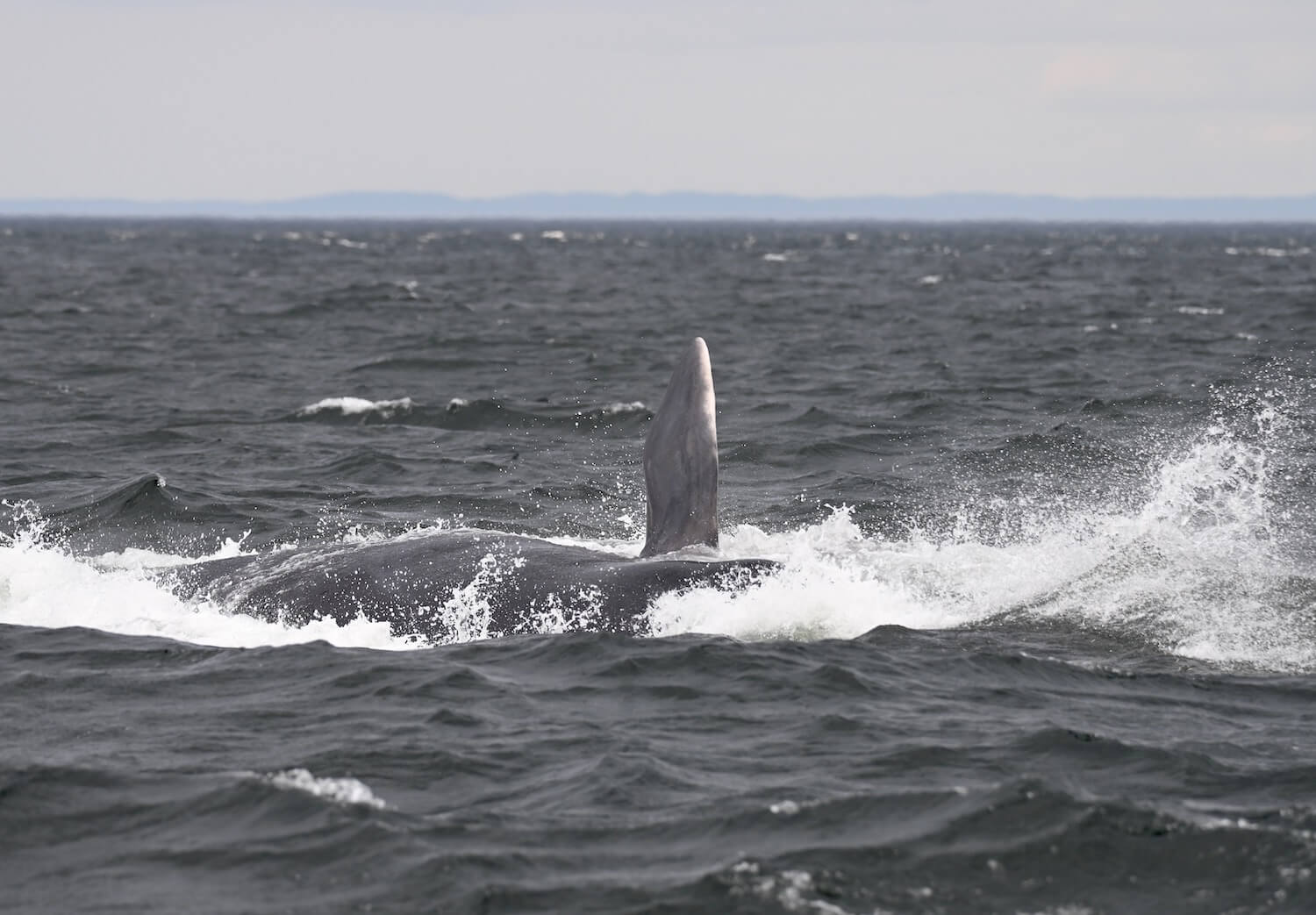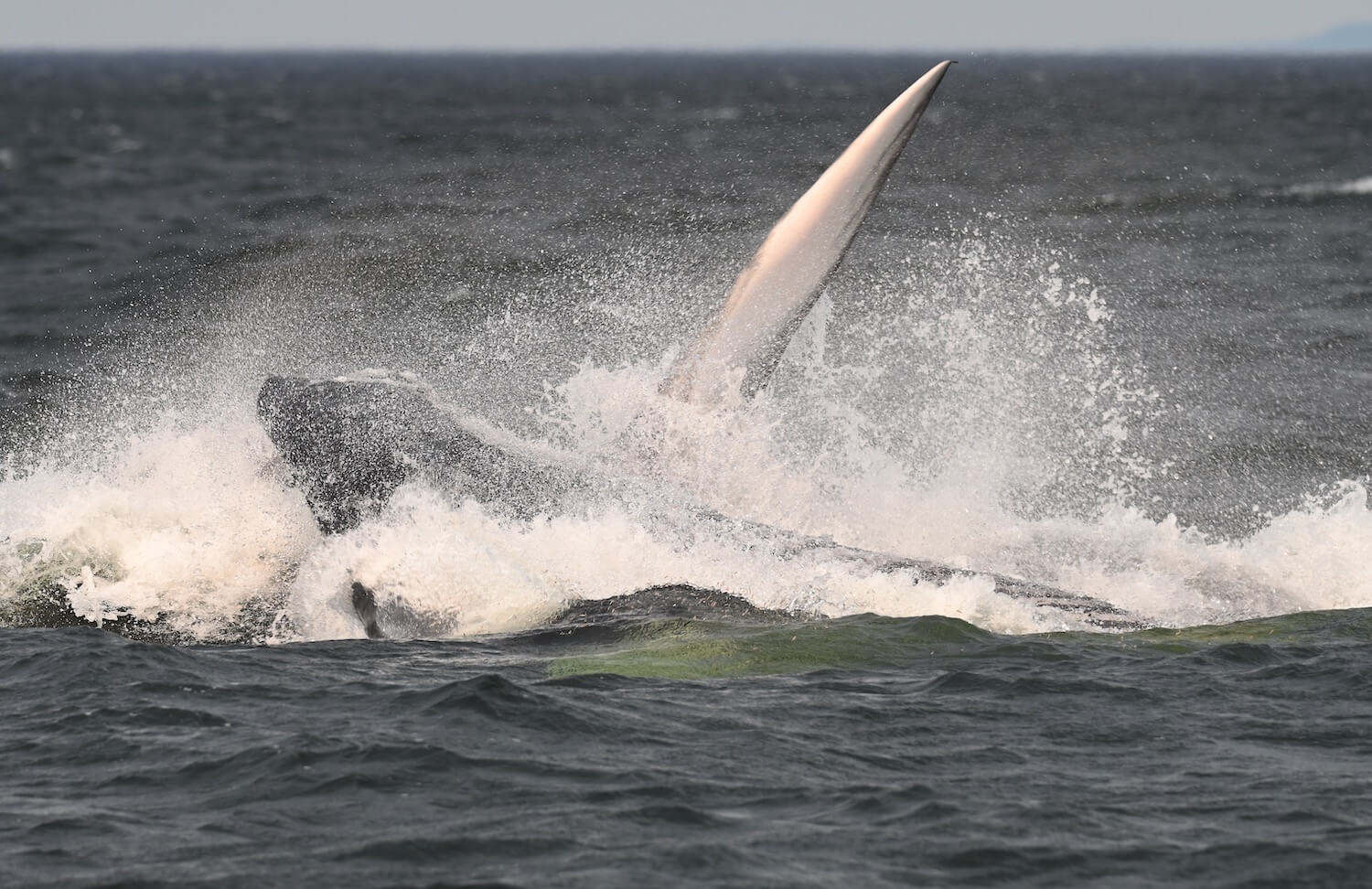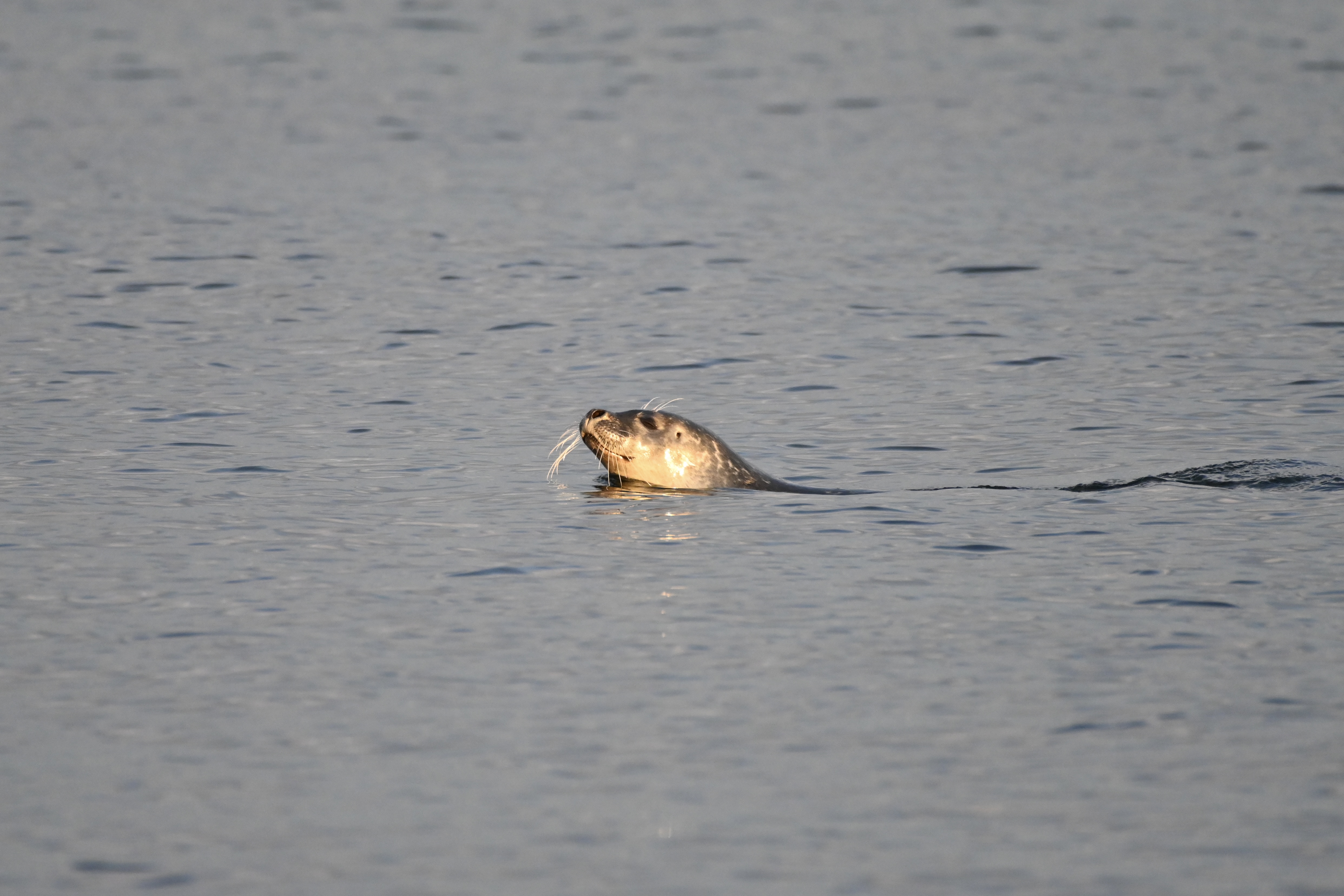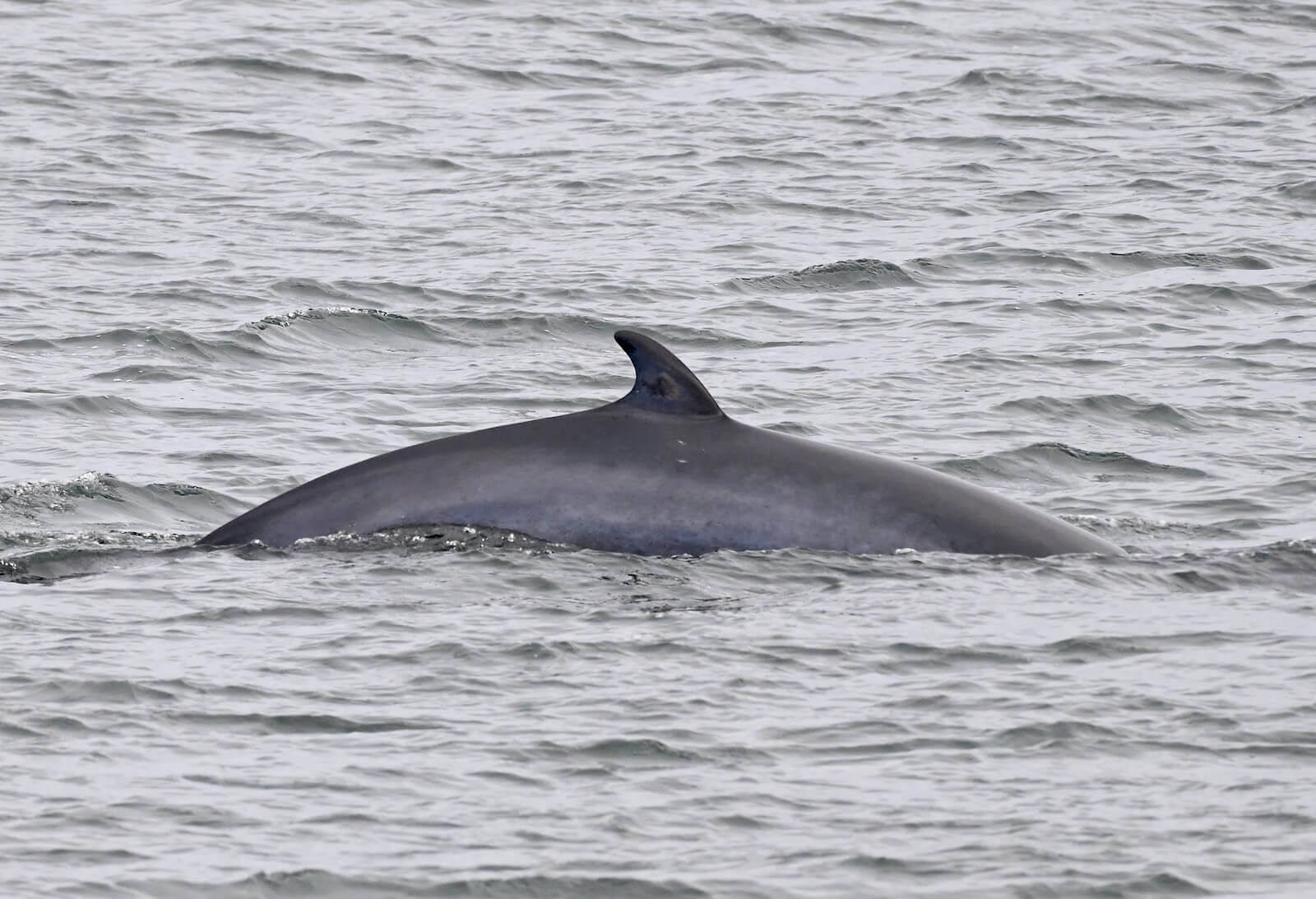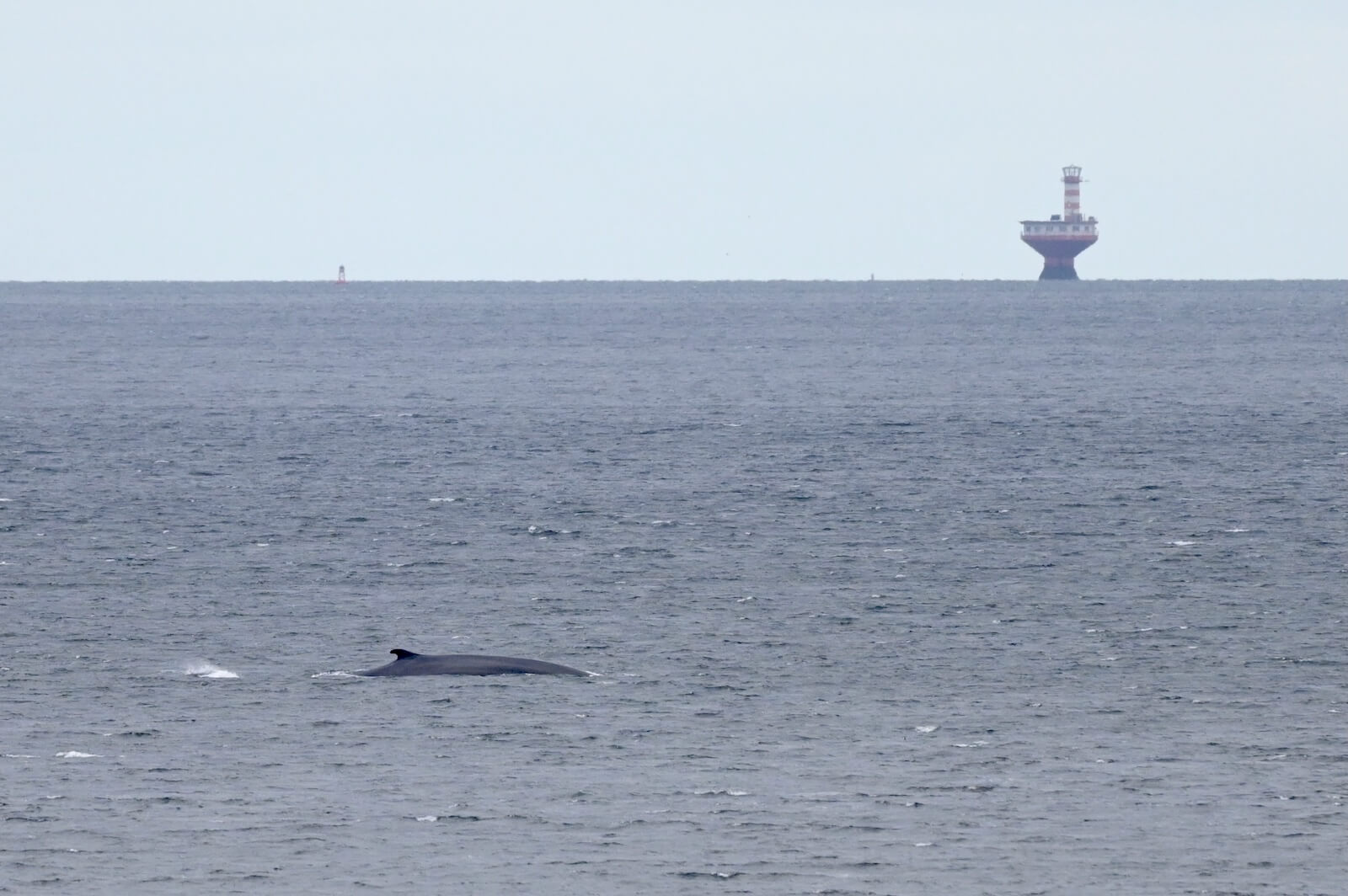Gaspé Bay has been the scene of some remarkable sightings, with a dozen or so humpback whales, six fin whales, and four blue whales in recent days. Several cetaceans have even been sighted from shore, which just goes to show there’s no time to let your guard down when you’re gazing out to sea!
Easy-to-identify tail fins!
“Since Monday, it’s been a real whale festival,” exclaims one passionate naturalist, before rattling off all the species she saw. In addition to large rorquals, a minke whale was also present, not to mention the first basking shark of the season. This harmless fish feeds by skimming the water surface. The species has hair-like structures associated with the gills called gill rakers that it uses to filter plankton. In fact, they’re sort of like the baleen in whales!
Among the identified humpbacks is H626, a.k.a. Gaspar, a female that can be easily recognized by the colour pattern on the ventral side of her caudal fin. Her right lobe shows the shape of the famous ghost to which she owes her moniker. She was reportedly seen accompanying another female and the latter’s calf. There is also the presence of H531, a.k.a. Le Souffleur, a female humpback that has been known since 1997. Indeed, back in the late 1990s, this individual was one of the first humpbacks to have adopted the estuary for extended stays. Images documented by a collaborator from the Mingan Island Cetacean Study (MICS)also reveal the presence of a humpback whale with one tail lobe folded backward and a fin whale that is missing a lobe. This fin whale lifts its tail when it dives, perhaps to give itself an extra push. Its truncated tail might have been caused by killer whale predation, entanglement, or a collision with a ship.
A resident of the Gaspé region adds that with so many whales, “there’s plenty of food in the bay,” before pointing out that they can also be seen from shore. There are a number of excellent land-based observation points ringing the peninsula. Forillon National Park, notably from Cap-Gaspé, Cap-Bon-Ami and Cap-des-Rosiers, also offers breathtaking views of the Gulf of St. Lawrence and Gaspé Bay. Using the Vigie Marine data visualization tool, we can see that no fewer than six humpbacks and one fin whale have also been present near Quebec’s Bonaventure Island and Percé Rock National Park.
Whales, seals, and… Ti-Croche!
In Sept-Îles, five fin whales and one blue whale were spotted. “The season is off to a slow start,” comments one scientist. A few minke whales and harbour porpoises were also in the area. A resident of Godbout is surprised to observe a pod of six belugas: “On Saturday, they were there in the early evening for an hour and then left. On Sunday, they returned in the mid-afternoon and were still there when the Sun went down.” Sightings of these white whales are indeed rare in the area.
In the Saguenay–St. Lawrence Marine Park, more and more species have been present. “Last Monday, there was a grey seal, a harbour seal, and a porpoise in the waves,” describes one enthusiast. “I also saw an adorable mama duck and her four little ducklings, I know… not marine mammals, but a nice bonus.” A North Shore resident believes she spotted a fin whale on Sunday, June 15. “I’m 95% certain, given the impressive blow when it came up from its dive – it was a real geyser!” – and also its imposing dorsal fin that we could see even when it was way out toward Îlets Boisés.” The fin whale Ti-Croche was in the area during the week and was even seen surface feeding. As for belugas, they have been seen plying the waters off L’Isle-aux-Coudres, Rivière-du-Loup and even Matane.
Thanks to all our collaborators!
Special thanks go out to all our observers who share their love for marine mammals with us! Your encounters with cetaceans and pinnipeds are always a pleasure to read and discover.
On the water or from shore, it is your eyes that give life to this column.
Odélie Brouillette
Marie-Andrée Charlebois
Krystal Chandler
Guylaine Côté
Thalia Cohen-Bacry
Laeticia Desbordes
Véronique Gélinas
Jade-Audrey Lavergne
Hélène Lahaie
Audrey Leblanc
Pascal Pitre
Renaud Pintiaux
Diane Ostiguy
René Roy
Christine Stadelmann
Andréanne Sylvain
Guy Synnott
J. Varin
Marielle Vanasse
Additionally, we would like to acknowledge the following teams that also share their sightings:
Sept-Îles Research and Education Centre (CERSI)
Group for Research and Education on Marine Mammals (GREMM)
Marine Mammal Observation Network (MMON)
Quebec Marine Mammal Emergency Response Network (QMMERN)
Mingan Island Cetacean Study (MICS)
Would you also like to share your observations?
Have you seen any marine mammals in the St. Lawrence? Whether it’s a spout offshore or just a couple of seals, drop us a line and send your photos to [email protected]!










